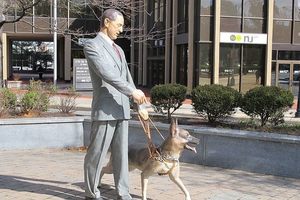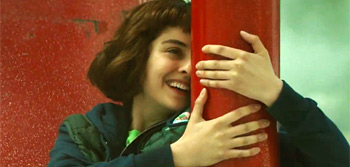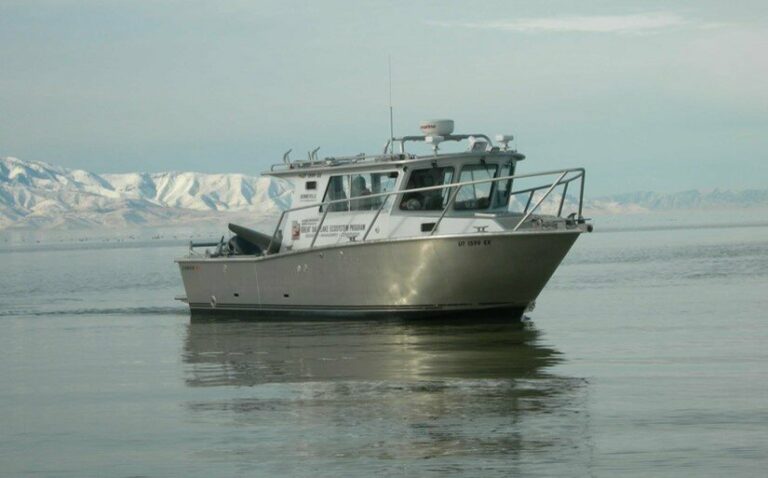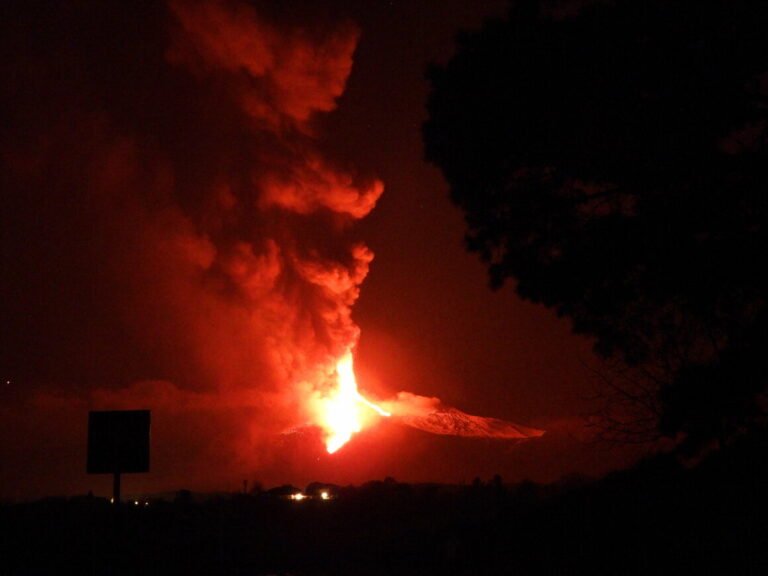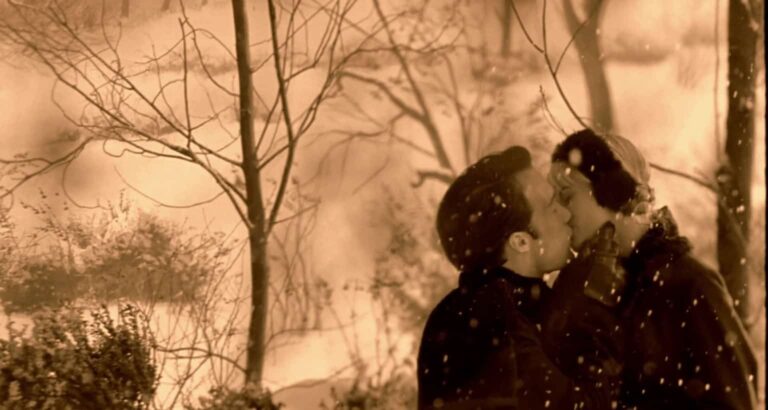Interview With Director Adam Stovall And Actor MacLeod Andrews Of A GHOST WAITS
Was it a mistake to take a power nap before my conversation with Adam Stovall and MacLeod Andrews – the director and star of the recent ARROW release, A Ghost Waits – or was it a mistake to tell them about it? To mess with me and my horrid sleep schedule, our interview was littered with random, nonsensical gibberish. I’m sure they’ll be disappointed to find out that these silly (albeit hilarious) interruptions ended up on my own cutting room floor. I couldn’t figure out how to spell them.
But their charm and fun-filled spirit shouldn’t have come as a surprise to me. After all, they were behind A Ghost Waits, a charming, fun-filled film about a spirit. Andrews plays Jack, a lonely, depressed handyman – loosely based on writer/director Stovall – whose latest fixer upper project just happens to be a haunted house. Unlike its previous tenants, Jack is unswayed by the place’s vocational spook, Muriel (Natalie Walker), and instead woos his way into her undead graces… much to the dismay of her own bureaucratic bosses.
Film Inquiry spoke with Stovall and Andrews about their experiences working on the film, including their low-budget approach to their roller coaster production – including a late-notice switch to black and white – and their collaboration with co-star Natalie Walker.
This interview has been edited for clarity and brevity (goodbye, gibberish).
Luke Parker for Film Inquiry: From what I understand, Adam, the inspiration for this movie came from a video game and a comic. To me, that almost sounds like an insane math equation, like “video game + comic = movie.”
Adam Stovall: That’s pretty much how I work. I ask, “how can I make this the most bizarre mathematic equation that I can?”
That’s not very artistic. That’s more scientific.
Adam Stovall: It’s weird. I’ve kind of come to realize that I don’t really start writing something until I don’t think it works, because then I have a problem to solve.
How did those two forms – the comic and the video game – come together for the film?
Adam Stovall: Well, the video game is P.T., this first-person, haunted house puzzle game. My friends had me play it and I’m not really a big gamer, but it was designed by Guillermo Del Toro and Hideo Kojima, so they were like, “you need to play this.” And when I did, I had them cracking up laughing because it was me reacting to a haunted house. So, a creepy noise happened and I’m just like, “nope, I don’t need to investigate that.”
MacLeod Andrews: But Adam, that’s the whole point! That you go and investigate.
Adam Stovall: And that’s why I don’t play games! But then, it got me thinking about a movie with a character, like me, reacting to a haunted house. Because I didn’t think I’d seen that before.
The web comic is “Saturday Morning Breakfast Cereal.” A guy asks a girl what she thinks the most American movie is, and she says Ghostbusters because here’s a movie where you have demonstrable proof of an afterlife that’s all about growing a small business and navigating government bureaucracy. I was like, “that’s hilarious,” but also, “oh, yeah!” If you saw a ghost, that would mean there’s an afterlife. I have so many questions.
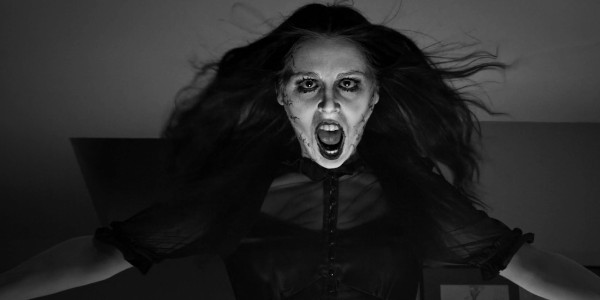
Those two things formed the spine of what became A Ghost Waits. Originally, there was another ending because the usual thing with ghosts is that there’s unfinished business. I had an ending that used that, but it wasn’t very good. It would not have been very satisfying. So, I chucked it and that opened up the idea of interrogating why it’s always unfinished business. Ghost stories tend to cover the same bases all the time, so let’s run some different bases. Let’s divorce the idea that she died there and so she’s stuck there.
If ghosts haunt, that’s their job. Let’s treat it like a job.
Now, you guys shared the writing credit on this project. Watching, I spotted one very clear nod to The Sixth Sense. I love talking to young filmmakers about their film inspirations. What were some of yours?
Adam Stovall: Well, God bless you for calling us young.
I have this rule that you should never remind the audience they could be watching a better movie, so I try not to do homage or anything. There’s one scene in this movie that we just stole from another film. But also, we’re big film lovers, so it makes sense that it kind of sprinkles into the mix.
The question, what films inspired this, is much more music that inspired me while I wrote it. And then, also, I don’t know. I watch entirely too many movies. I used to be a film journalist and I’d watch like 300 movies a year. You just get to the point where you want to burn the three-act structure and think, “maybe I hate movies now?” And you can either let that calcify or you can interrogate it.
My friend, Nick Thurkettle, who was a co-producer on the movie, likes to say, “as an artist, I’m a destroyer. I have to destroy something in order to understand it.”
MacLeod Andrews: That’s Adam for you, destroyer of worlds. [laughs]
Adam Stovall: Look upon me and tremble! [laughs]
But like, in the macro sense, Back to the Future and Pulp Fiction were the two movies I looked back on and said, “I want to do that!” Both of them are massive parts of my love for cinema.
What about you, MacLeod?
MacLeod Andrews: Well, technically, my writing credit came a little bit after the fact. When we were doing reshoots, that’s where Adam and I kind of co-conceived scenes to fix certain elements. A lot of the first half of the movie is where you see my influence come in.
So, I can’t really say that I had anything influencing me at the inception of the film, for I was not present at the inception of the film. I can tell you movies that I like?
Give me three.
MacLeod Andrews: Willow, The Princess Bride, and Willy Wonka and the Chocolate Factory.
I know this was a low-budget production, which is almost a time-honored tradition in the horror genre. It requires a lot of what I call “MacGyver filmmaking.” Can you each talk about the ways you wanted to maximize the effect on a relatively minimal budget?
MacLeod Andrews: I think it all came around to utilizing the resources we had. It forces you to think creatively and avoid first-impulse choices you can’t do. It’d be like, “oh, let’s do…no, can’t do that,” and “let’s try…nope.” So you lean on simpler magic. You know you have a tripod, so we can do a plate shot and have the ghost dissolve from that. You can have two me’s talking to one another.
And then, some stuff is just because it’s fun. Not taking yourself too seriously. Like cabinets opening, we just had fishing line. And there’s room for it in this movie because of its sense of humor.
Adam Stovall: It’s also funny because there’s horror, there’s romance, there’s comedy, and I feel like we kind of naturally focused on the romance and the comedy. I can remember MacLeod saying, “We really need to put a little bit more horror in this. Let’s have the bench move, let’s do this…” and it’s very simple stuff, like the door opening behind Jack when he’s checking the furnace.
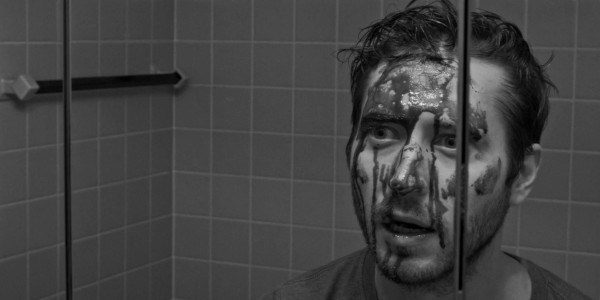
You take it for granted, honestly. I wasn’t even thinking about the small horror stuff. But then you do it, and it’s so crazy. You’re in a room with 400 people who’ve all see a million doors open behind somebody in movies, and it still fucking works. It’s crazy.
MacLeod Andrews: It’s finding the simple thing that simply cannot be.
Adam Stovall: When you’re making something on such a low budget, it would be very easy to use that as an excuse. But we decided we didn’t want to lament what we didn’t have. We just wanted to use the hell out of what we did have and so, simplicity, simplicity, simplicity kind of became the North Star. Like, “okay, we can’t afford a huge effect. What can we do?”
MacLeod Andrews: It’s like Muriel’s raising. We can get a box fan and tilt the camera to create the illusion that she’s levitating off the ground.
I wanted to talk about effects because I’ve read that the original plan for this film didn’t include the black and white aesthetic, which is kind of crazy to think about since the look feels so grounded and purposeful.
Adam Stovall: Seems kind of foundational, doesn’t it? Like something you’d want to plan in advance? [laughs]
Adam, can you talk about the decision to switch to black and white?
Adam Stovall: I love the black and white aesthetic. So when we were setting all of this up, I remember being on a location scout with Chenney Chen, the UPM (unit production manager), and saying, “you know, I think I want this to be black and white.” And she said no, absolutely not because black and white’s a really hard sell. We got a lot of no’s from festivals and distributors simply because the movie’s black and white, but I love it!
We shot it in color. We were going to make it in color. We had a plan for what we would be doing in After Effects to augment the ghosts and everything. In principal photography, Mike Potter shot the film, he had kind of a minimal lighting rig and he was using his camera, which is a Blackmagic URSA mini, a 4K, and my camera, which was a Blackmagic Pocket Cinema, a digital 16.
And when I shot the pickups – because we couldn’t afford to bring anybody back – we were using natural light, outside of one shot that we just couldn’t use natural light for, and it was just my camera. When it came time to edit and color correct, it wasn’t visually cohesive to the degree that I wanted it to be. I was driving myself crazy trying to get it to match perfect and finally, one day, MacLeod said, “have you thought about making it black and white?” And I said, “I have!’
So we dropped a black and white LUT on the movie, which is a color correction algorithm, and that’s not what we ended up using – we got the colorist, Ari Rothschild, who did a really great job tailoring it – but the second we dropped that LUT, it just felt right. Not only did it address the technical concerns, but tonally and thematically, that was the movie.
A lot of that grounded feel I was talking about comes from the paranormal parts of the film – the haziness in the dream sequences and especially Muriel’s appearance. Did anything about the paranormal parts change when you switched to black and white?
MacLeod Andrews: Typically, especially in horror, if you’re going to go black and white, the impulse is to go really hard contrast, like really accentuate the shadows. It’s a perfectly good choice, it’s a very attractive choice, but it didn’t feel like the heart of this movie. So, we went with a lighter, more gray color pallet just because it felt more correct. Less scary, perhaps, but…
Adam Stovall: I think what made it feel right is that there’s too much life in color. By draining the color, it reflects the lifelessness of these two characters. And that’s not there if it’s all stark whites and blacks. It needs to be grayscale for it to convey their interior lives.
I know you originally intended the role of Muriel to go to another actress, a friend you actually wrote the part for. How did Natalie become part of the project and what ended up making her the right choice?
Adam Stovall: Well, she is a beaming light of talent, which is what made her the right choice.
I’d been following her on Twitter. She’d done this synopsis of The Phantom of the Opera which was just hilarious. So, when our friend got cast on a TV show and we were sent back to the drawing board, I remembered that Natalie’s not just a writer, she’s an actor too. There weren’t any clips on her website, but her email was there. So I emailed her and told her about the movie. I said I thought she’d be really good for a part and that she could reach out to me if she was interested. She did; I sent her the script; she liked it; she did a self-tape and literally the second it starts, it was like, “oh, that’s Muriel!”
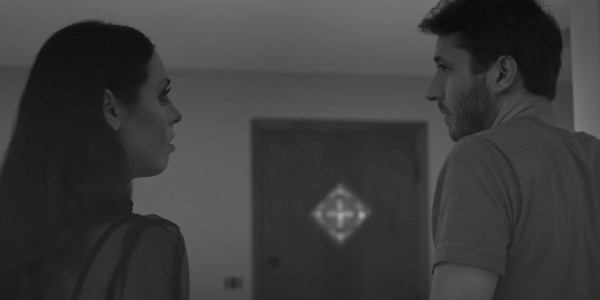
Natalie is this very effervescent person, just a huge personality. She walks in and fills a room. I saw her do an off-Broadway show where she started belting and I just started crying. She was amazing. So, when she sent in the self-tape, it was perfect. We offered her the role and flew her in. And they met on set, MacLeod and Natalie. There were no chemistry reads.
MacLeod, that’s actually what I was going to ask you about because so much of this film is dependent on your chemistry with Natalie. Without any time to rehearse, what do you attribute that chemistry to? Please talk about the collaboration you guys had.
MacLeod Andrews: Great chemistry, I’ve found in my experience, comes when people arrive on set very professionally. They know what their job is, they know why they’re there, and you don’t waste any time on hangups or, you know, defensiveness. You say, “my job is to love you. So while we’re shooting this scene, I’m an open book. Let’s talk.” And that professionalism keeps you from being like, “was that real?” You just dive in.
I actually wasn’t sure, because I’ve interacted with both types of actors, I didn’t know what I was going to get with Natalie. But the second we started shooting, she was like, “yeah, we’re professionals, let’s do it.” And I was like, “fuck yes, let’s do it!” So we just had fun.
She’s a brilliant comedian. She’s great at improvisation, so when she was throwing energy at me, I just tried to keep up and reciprocate.
Adam Stovall: It’s like what they say when you’re playing tennis with somebody: playing with a better tennis player raises your game as well.
Film Inquiry would like to thank Adam Stovall and MacLeod Andrews for taking the time to speak with us!
A Ghost Waits is available to stream exclusively on ARROW.
Does content like this matter to you?
Become a Member and support film journalism. Unlock access to all of Film Inquiry`s great articles. Join a community of like-minded readers who are passionate about cinema – get access to our private members Network, give back to independent filmmakers, and more.
Join now!
